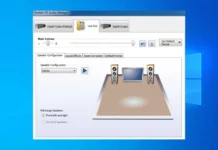Today’s digital devices come with a wide variety of features and functionalities, which often makes it challenging to keep all of them up-to-date. With new software versions being released on a regular basis, device manufacturers must constantly update the software in their products to bring them up-to-date. Firmware updates are designed to rectify any bugs or other issues in the operating system and make it more user-friendly. While there are many benefits that firmware updates provide, they can also cause problems if poorly managed. Below is an exploration of firmware and why firmware development is critical.
What Is Firmware and Why Is Firmware Development Critical?
Devices come as standard with one or more firmware, which is a type of software that runs on a device’s embedded system (ES). What is firmware? It gives your device the ability to function and perform various functions, like making and receiving calls, sending and receiving SMS, connecting to the Internet, etc. A few of the key reasons why firmware is so important are: Firmware is what makes mobile phones, tablets, and other devices unique. It’s what makes your phone unique from everyone else’s phone, and it allows you to customize your phone’s appearance and function to your own needs.
Types of Firmware
Firmware can be separated into two categories, the ES and the HW. The ES is the part of the device that is responsible for running the software and performing various operations. It is responsible for handling data, operating the device, and communicating with the network. The HW is the part of the device that controls the ES and performs the desired tasks, like receiving and displaying 2D and 3D graphics, managing Wi-Fi communication, and much more.
How Does a Firmware Update Work?
The ES (firmware) manages the HW (firmware). It has two types of communication with the HW: Inter-process Communication (IPC): This is where the ES sends instructions to the HW through one or more IPC messages. Hardware Communications: This is where the ES directly controls the functionality of the HW through hardware communication. For the firmware update process to work, the ES must access the HW and manually ask for the “software” to be updated through the “hardware.” If the update process is successful, the ES then has to make the “software” aware of the new “code” so that the software can be updated to use the new features. Once the “software” has received the new “code,” it can provide the desired functionality.
Benefits of Firmware Updates
There are many benefits to updating your device’s firmware, including improved device performance, enhanced security, and the ability to enjoy new features.
- Improved device performance: Firmware updates often deliver significant improvements, from faster app load times to reduced battery consumption. These updates can improve your device’s overall performance.
- Enhanced security: Software updates often contain improvements to your device’s security features. This can help protect your data and make it harder for hackers to access your device.
- Access to new features: Many devices support new features only when they’re running the most recent software. However, you can often enjoy these features by updating your device’s firmware.
Flaws in the Current System: Reasons for Updating Firmware
A firmware update also has to address some flaws in the current system. Example, an app that cannot function properly, a piece of hardware that doesn’t work as advertised, a software flaw, and more. These issues may not be apparent at first, but they may cause a lot of frustration for the users over time. It may be difficult to pinpoint the exact cause of the issue, but it can easily ruin the user experience.
Is It Possible To Update Your Firmware?
Firmware updates are designed to provide the best experience for most users. However, some devices may have special hardware that makes it possible to update the firmware manually. For example, some Android devices with a special chip inside can be updated manually. However, this only applies to a small number of devices, so it’s not something you’re likely to encounter on your device.
Proper Requirements For Firmware Update Process
The firmware update process can differ depending on the device and model type. There are a few key factors that determine the success or failure of the process.
- The device must be charged enough to complete the update process. Many users experience issues trying to update their devices when they don’t have enough battery power.
- The device must be connected to the Internet while updating the firmware. While not all firmware updates are available online, many are. Therefore, it’s important to ensure that your device is connected to the Internet during the update process.
- The device’s software needs to be up-to-date, which means that it needs to be running the latest version of the software.
- The device needs to be within 30 days of its device’s official launch date.
Firmware is critical for device brands and vendors. It’s what gives your phone, tablet, or other devices unique functionality and makes it unique from everyone else’s device. However, firmware updates can cause problems if they’re not managed properly. Firmware updates can deliver significant performance improvements, enhance security, and make it easier to access new features.











![How to Fix [pii_pn_e18c514f3fdea8f6] Error Code? [pii_pn_e18c514f3fdea8f6]](https://www.techwebtopic.com/wp-content/uploads/2022/02/pii_pn_e18c514f3fdea8f6.jpg)




![How to Fix [pii_email_e7ab94772079efbbcb25] Error Code? How to Solve [pii_email_e7ab94772079efbbcb25] Error Code?](https://www.techwebtopic.com/wp-content/uploads/2022/02/istockphoto-898443430-612x612-1.jpg)